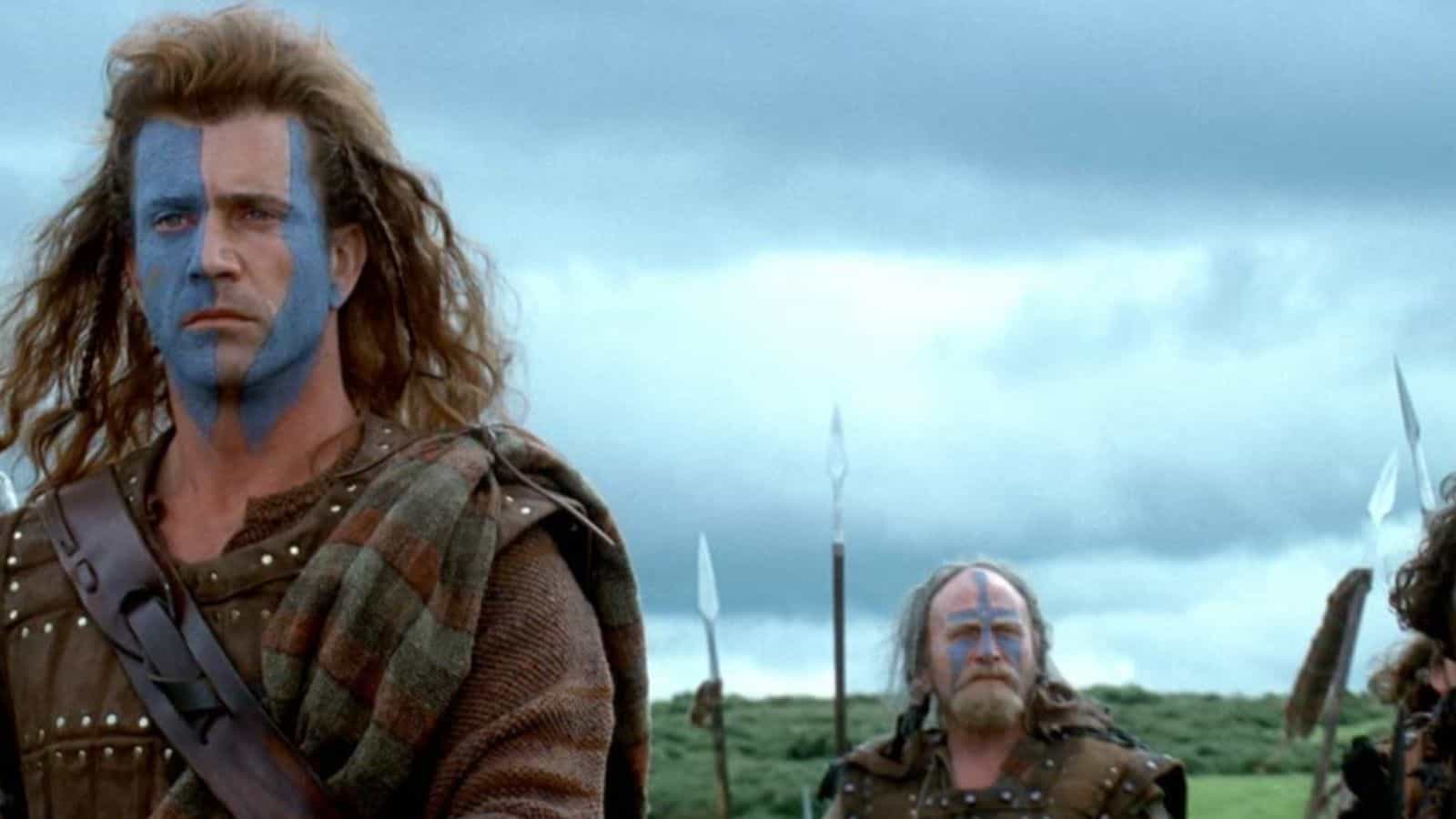When artistic storytelling enters the cinematic realm, authenticity sometimes takes a backseat. Hollywood often reshapes real-life events to enhance dramatic narratives, and the resulting films can blur the line between fact and fiction. Dive into this exploration of 20 movies that took artistic liberties with true stories. Be prepared to see some of your beloved ‘based-on-true-events’ films in a new light.

The Pursuit of Happyness
Will Smith brings to life Chris Gardner’s harrowing journey of homelessness alongside his young son in “The Pursuit of Happyness.” While the film does depict Gardner’s struggle, it only grazes the surface of the more prolonged, grueling adversities he endured in real life. Despite the film’s portrayal, Gardner’s unwavering spirit and his determination remain a beacon of hope for many.
Braveheart
“Braveheart” is etched in cinematic history for its captivating visuals, including Mel Gibson’s iconic blue-painted face crying out for freedom. However, historical inaccuracies like the kilts (which wouldn’t exist for centuries) remind us that Hollywood prioritizes drama over strict adherence to fact, even when narrating tales from the annals of history.
Argo
“Argo,” directed and starred in by Ben Affleck, is an edge-of-the-seat thriller. But contrast its climactic airport chase with the historical record, and you’ll find the real-life rescue mission was a subdued, covert operation. There were no chase scenes or dramatic confrontations as portrayed in the film.
A Beautiful Mind
In “A Beautiful Mind,” Russell Crowe portrays mathematician John Nash, battling both groundbreaking mathematical problems and schizophrenia. The film employs fictional visual hallucinations to illustrate Nash’s mental health struggles, whereas, in reality, Nash was tormented more by auditory delusions. This change exemplifies how film can artistically deviate from reality.
Lincoln
Steven Spielberg’s “Lincoln” paints a picture of President Abraham Lincoln’s final days, his endeavors to end the Civil War, and abolish slavery. While Daniel Day-Lewis’s portrayal is immersive, the film does incorporate fabricated conversations and events, serving as narrative devices rather than historical accounts.
Foxcatcher
“Foxcatcher” delves into the eerie bond between John du Pont and the Schultz brothers. While capturing some semblance of reality, the film condenses timelines and exaggerates relationships to create a more intensified atmosphere, straying from true events.
The Blind Side
“The Blind Side” portrays Michael Oher’s remarkable transition from homelessness to NFL stardom, facilitated by the caring Tuohy family. Nevertheless, the film diverges from Oher’s memoir in various ways, amplifying certain moments and conflicts for heightened drama.
The Social Network
In “The Social Network,” audiences get a dramatized account of Mark Zuckerberg’s Facebook inception at Harvard. While certain scenes are rooted in fact, many personal motivations and events were Hollywood enhancements, reminding viewers to distinguish cinematic tales from biographical truths.
Titanic
James Cameron’s “Titanic” did memorialize the ill-fated ship and its passengers. However, the central love narrative between Jack and Rose is pure fiction. The tragedy of the RMS Titanic is intertwined with a fabricated romantic tale, demonstrating Hollywood’s penchant for blending reality and make-believe.
The Revenant
In “The Revenant,” Leonardo DiCaprio embodies frontiersman Hugh Glass, retelling his survival against the wild’s brutalities. However, the cinematic narrative infuses a fictional vengeance subplot centered around a son, a detail absent from historical accounts. Such creative additions spotlight how films, while based on real stories, often veer into imaginative territories.
Saving Mr. Banks
“Saving Mr. Banks,” starring Tom Hanks and Emma Thompson, recounts the backstory of “Mary Poppins'” inception. While the film emphasizes strained dynamics between P.L. Travers and Walt Disney, reports suggest their real interactions were more amicable. However, the movie rightly touches upon the pivotal influence of Travers’ father on the cherished story.
The Sound of Music
The beloved “The Sound of Music” casts the enchanting von Trapp family’s life against the backdrop of Nazi-occupied Austria. While based on real events, certain cinematic elements, like their mountainous escape, are Hollywood’s grand interpretations rather than precise historical retellings.
The King’s Speech
“The King’s Speech” delves into King George VI’s stuttering challenge and his bond with therapist Lionel Logue. The film, however, manipulates the actual therapy progression and its duration, ensuring the story remains engaging from a cinematic perspective.
Patch Adams
“Patch Adams,” with Robin Williams at the helm, showcases a doctor’s unique humor-infused therapeutic approach. The narrative, though rooted in Adams’ real experiences, integrates fictitious events, notably a girlfriend’s demise, underscoring Hollywood’s occasional divergence from reality.
Moneyball
“Moneyball” captures Billy Beane’s revolutionary, statistics-driven baseball strategy. But while the core concept remains intact, the film takes creative liberties regarding player depictions and specific events, reinterpreting baseball’s analytical evolution.
The Fighter
“The Fighter” chronicles boxer Micky Ward’s journey, replete with familial complexities and professional challenges. While Mark Wahlberg’s portrayal resonates authentically, the movie does modify family interactions and timelines to elevate its dramatic essence.
American Sniper
Bradley Cooper embodies Chris Kyle in “American Sniper,” showcasing the decorated sniper’s career and personal challenges. The film, while emotionally resonant, simplifies and adjusts certain events and character dynamics, molding them to fit a cinematic mold.
Rudy
“Rudy” celebrates Rudy Ruettiger’s tenacity and his dream to play for Notre Dame. The narrative, while mostly faithful, integrates fictional characters and moments to augment its emotional crescendo. However, the tale’s core message remains undiluted.
